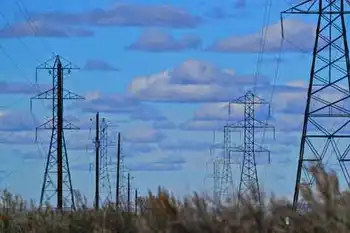Brooklyn gets first solar-powered EV station
The charging station sits on an industrial lot near the companyÂ’s headquarters in Red Hook, Brooklyn, overlooking New York Harbor and downtown Manhattan. Designed and built by BE, the station is off-grid, modular, constructed with recycled, decommissioned steel shipping containers and entirely powered by state-of-the-art Sharp 235 watt photovoltaic panels.
The project is part of BEÂ’s effort to showcase urban sustainable energy solutions in New York City.
The charging station is currently used to charge BE's 100 percent electric MINI E, making it one of the few cars in the world to run exclusively on solar power. BMW GroupÂ’s MINI E has a range of just more than 100 miles and takes around three hours to charge.
“It never ceases to amaze me, when I get behind the wheel of this 95 mph sports car, that it doesn’t use a single drop of gasoline, and that all of its power comes from the solar energy we collect right here on the Brooklyn waterfront,” says BE president and CEO Lex Heslin.
“We're thrilled that our electric MINI E is part of BE's groundbreaking effort to bring sustainability to motoring” says Richard Steinberg, Head of EV Operations and Strategy for BMW.
With a capacity of about six kilowatts, BE's charging station also produces enough energy to power a small home, and its battery bank stores electricity 24/7 for on-demand usage. Many of the major car manufacturers are planning to launch electric or plug-in hybrid cars starting next year.
“EVs will significantly contribute to the reduction of atmospheric pollution, particularly if their 'fuel' is clean, green electricity,” says Heslin. “Real, system-wide change will come when we combine energy efficiency, energy conservation and a shift from carbon-emitting fuels to sustainable energy.”
Related News

New fuel cell could help fix the renewable energy storage problem
LONDON - If we want a shot at transitioning to renewable energy, we’ll need one crucial thing: technologies that can convert electricity from wind and sun into a chemical fuel for storage and vice versa. Commercial devices that do this exist, but most are costly and perform only half of the equation. Now, researchers have created lab-scale gadgets that do both jobs. If larger versions work as well, they would help make it possible—or at least more affordable—to run the world on renewables.
The market for such technologies has grown along with renewables: In 2007, solar and wind provided just 0.8%…




